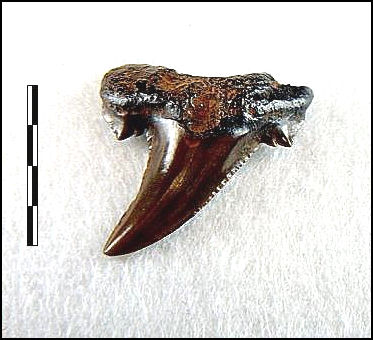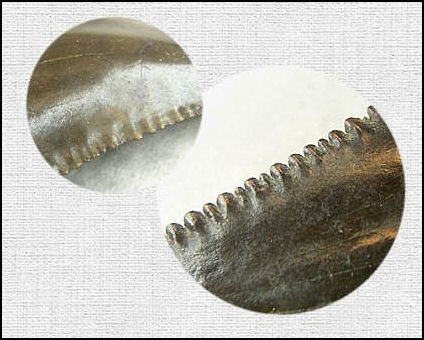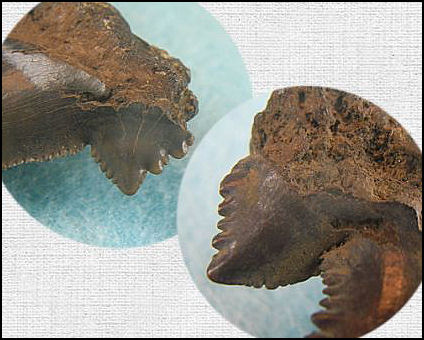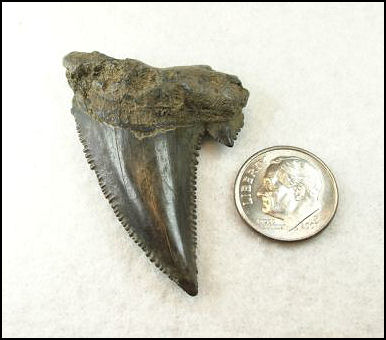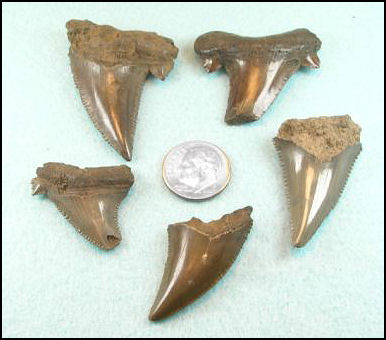|
RICS Age - Eocene Commonality - Uncommon The Carcharocles group is best known for the species C. megalodon, better known as megs. While there is some debate as to the actual number of species in this genus, we can limit the Carcharocles teeth found in Monmouth County, NJ to one of two species, C. auriculatus (Rics) or C. chubutensis (Chubs).
Carcharocles
auriculatus crowns have a triangle shape, with large coarsely
serrated cusplets. The root has a wide “U” shape and the root lobes are
rounded. The serrations on the crown can be variable, for the most part
they are course and irregular, but I have teeth where the serrations are
faint and do not extend the entire length of the crown. Complete teeth
are uncommon as the roots in our area tend to fossilize poorly. Average
length is between 1 – 1 ½ inches with maximum sizes up to 4 inches.
Lateral C. auriculatus
The serrations can be variable, with most teeth having coarse
The cusplets of
Carcharocles auriculatus are large with coarse
Anterior C. auriculatus, the serrations on this tooth are coarse
and
My largest ric, at just under 2 inches.
You will find more rick blades than complete teeth. |
